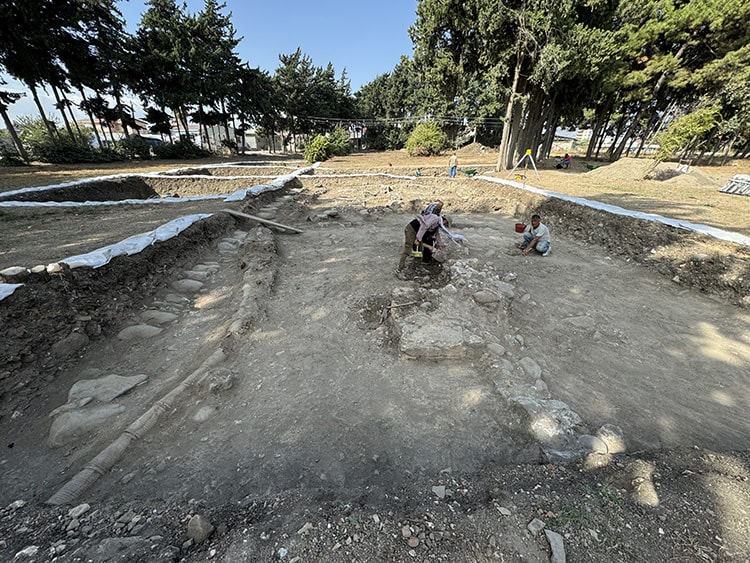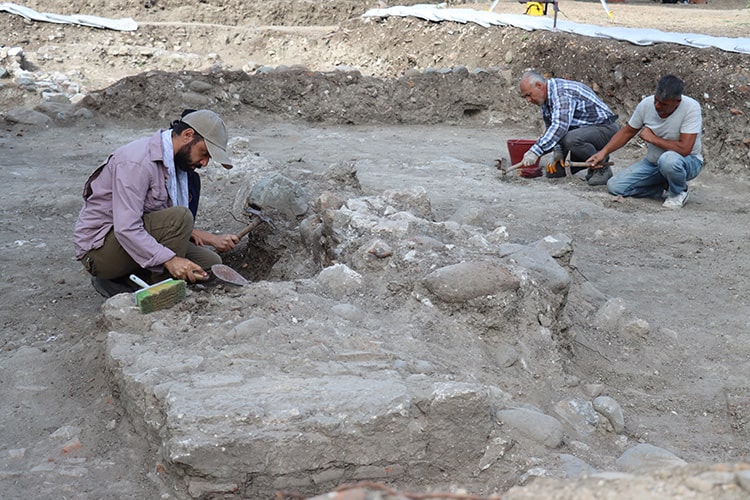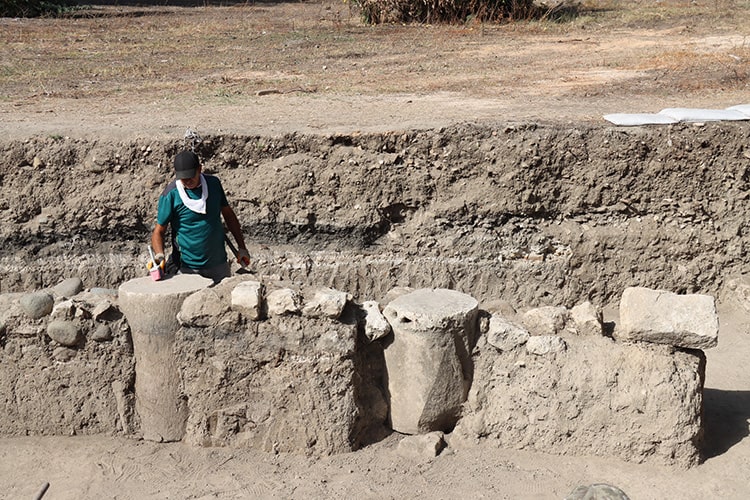In Hatay, which was shaken by the earthquakes on February 6 and nearly erased from the map, scientists are investigating traces of ancient earthquakes in the remains of the Antakya Ancient Hippodrome.
Archaeological excavations conducted around the Antakya Ancient Hippodrome, built during the Roman Period, have revealed that the palace, whose remains have been uncovered, was rebuilt after being destroyed by a major earthquake in the past.

The work is being carried out by a 20-member team led by Prof. Dr. Hatice Pamir, a faculty member of the Department of Archaeology at Hatay Mustafa Kemal University. The excavation team is investigating the traces of artifacts built during the Roman and Hellenistic periods.
Last excavation season, pieces of pipes, musical instrument fragments, and dice were found.
The excavation director Pamir stated that the palace is dated to the 4th century AD, saying, ‘We first conducted geophysical research in the area where the palace is located and obtained some data. Following the data, we began the excavation work. The palace, which narrates the life of Antakya intertwined with earthquakes, was rebuilt after undergoing significant destruction.’

‘We found traces from three different periods in the structure. One of the beautiful results we achieved in this year’s excavations is that we observed the use of column shafts and block stones from the palace in the reconstruction process. This also provides us with clues for future research to be conducted on the palace.’
Pamir, stating that excavations in the hippodrome are also ongoing, shared the following information:

‘There is a structural element that divides the flat area where the races were held in two. In our work there, we obtained data indicating that the structure was built in 115 AD, and we found siphon systems suggesting that the surface of the platform was covered with pools. We also reached data indicating that the surface was covered with mosaics. This provides important information on how we can visualize the hippodrome in three dimensions.’
Cover Photo: Salim Taş/AA

